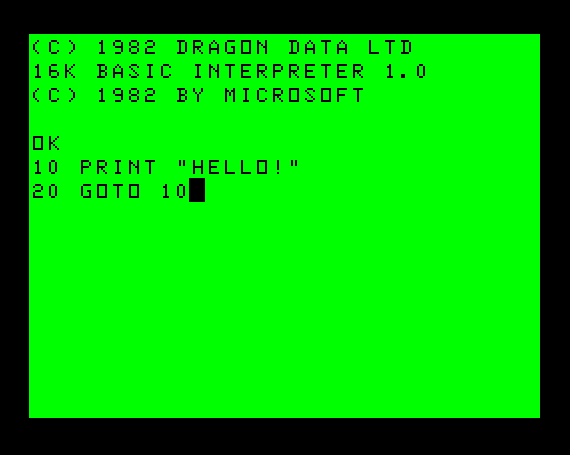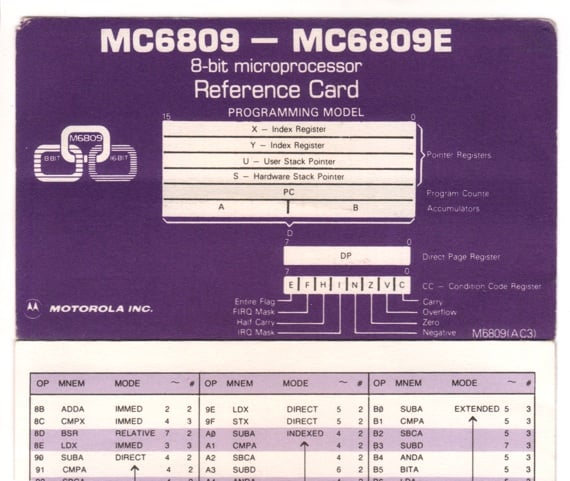The Motorola factor
But software written in Basic wouldn't run straight off the tape because the two machines used different tokens to represent Basic keywords. And while Tandy had selected Microsoft's entry-level Color Basic, the PAT team chose an extended version with a broader array of graphics modes and other features.
PAT also contracted assembly language specialist Duncan Smeed of the University of Strathclyde, Glasgow to work on the new machine's Bios. Motorola had a strong presence in Scotland. Its UK semiconductor operation was based in East Kilbride, south of Glasgow. It still is, though the business, spun out of Motorola in 2004, is now called Freescale.

Basic programming
Smeed took the stock Motorola Bios and proceeded to tweak it for the hardware changes PAT was making to the reference designs. Smeed also made numerous optimisations, for instance recoding the keyboard scanning routines - a vital part of a system operated through Basic - to yield a 10-15 per cent performance jump over the reference hardware and the CoCo. The Bios assembly code was prepared on the University's DEC PDP-11 and then burnt to EEProm at Motorola.
He craftily dropped his initials, 'DNS' into the Bios' six-byte end-of-line sequence. Only the first two bytes of the six, Carriage Return and Line Feed are used, unless you poke an address with a '6' instead of a '2', in which case Duncan's initials print out on every line. Smeed hand-burned the code, not included in the Bios source print-out, into the final version EEProms

Motorola reveals the 6809E's basics
Smeed would leave Strathclyde in 1983 to join Dragon Data as its Systems Software Manager. He returned to academia in 1986, a year after leaving Dragon, and today he is once again teaching computer science at the University.
PAT would further differentiate Dragon's hardware from Tandy's by adding a parallel printer port in place of the CoCo's serial connector. The video chip was adjusted for 625-line PAL output rather than the US-standard 525-line NTSC. How much of this adjustment was done merely to avoid invidious comparisons between the Dragon and the CoCo, or was a genuine attempt to take a stock design and make a better will probably never be known.
As Smeed now recalls: "There were three drivers behind the Dragon's early development: time to market, time to market, time to market."

From Risc to risque: Motorola's 6809E command set prompted many a schoolboy snigger
The pressure was on to get the kit out and get it out very quickly. In those circumstance, developers have to take any shortcut they're offered.
The prototype Dragon, fitted with 16KB of memory and codenamed 'Pippin', was completed in November 1981, allowing Tony Clarke to show the PAT team's work to the Mettoy board and so gain its approval to put the computer into production.
